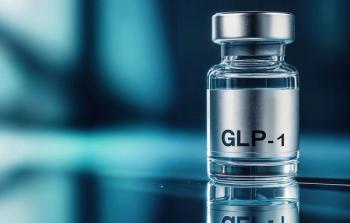Key Takeaways
- Bayer submits New Drug Application (NDA) for gadoquatrane: The investigational macrocyclic gadolinium-based contrast agent is designed for contrast-enhanced MRI of the central nervous system and other body regions in adults and pediatric patients, including neonates.
- Positive Phase III QUANTI trial results: The trial demonstrated that gadoquatrane at a 0.04 mmol/kg dose provides effective lesion visualization and detection, meeting all primary and secondary endpoints, while using 60% less gadolinium than standard macrocyclic agents.
- Potential patient benefits: Offers a lower gadolinium dose option, especially important for patients with chronic diseases and those requiring multiple contrast-enhanced MRIs over their lifetime, including vulnerable pediatric populations.
Bayer announced that it has submitted a New Drug Application (NDA) to the FDA for gadoquatrane, an investigational macrocyclic gadolinium-based contrast agent (GBCA) intended for contrast-enhanced MRI of the central nervous system (CNS) and other body regions in both adults and pediatric patients, including term neonates. According to the company, the proposed dose of 0.04 mmol/kg represents a 60% reduction in gadolinium compared to currently approved macrocyclic GBCAs dosed at 0.1 mmol/kg, positioning gadoquatrane as the lowest-dose agent of its class if approved. The submission is supported by positive efficacy and safety data from the global Phase III QUANTI trials, including a CNS study presented at the European Congress of Radiology (ECR).1
Will Bayer’s Gadoquatrane Set a New Low-Dose Standard for MRI Contrast Agents?
“There is a rising need for medical imaging, among others driven by the increasing incidence of chronic diseases such as cancer and cardiovascular diseases,” said Konstanze Diefenbach, head, radiology research & development, Bayer, in a press release.
QUANTI Trials Demonstrate Safety and Efficacy Across Populations
- The pivotal QUANTI clinical development program enrolled 800 patients across 15 countries to evaluate gadoquatrane at a reduced dose of 0.04 mmol Gd/kg, which is 60% lower than standard macrocyclic MRI contrast agents.
- The program included two randomized, double-blind, crossover Phase III trials—QUANTI CNS and QUANTI OBR—alongside a dedicated pediatric study.1
- QUANTI CNS evaluated the efficacy and safety of gadoquatrane in adults with known or highly suspected pathologies of the CNS undergoing contrast-enhanced MRI.
- QUANTI OBR investigated the safety and efficacy of gadoquatrane in contrast-enhanced MRI of all other body regions, including head and neck, thorax (including breast and heart), abdomen, pelvis, extremities, and blood vessels using magnetic resonance angiography.
- The primary endpoint of QUANTI CNS was visualization of known or suspected CNS disease using gadoquatrane at 0.04 mmol Gd/kg compared to unenhanced MRI scans and scans using a standard macrocyclic GBCA, while the primary endpoint of QUANTI OBR was visualization of known or suspected disease in non-CNS regions.2
- Results from both studies met primary and secondary endpoints.
- While initial results from the QUANTI CNS trial were presented at ECR, further results are expected to be released at an upcoming scientific meeting.1
Pediatric Data Support Use Across Age Groups
The submission was also supported by data from the QUANTI Pediatric trial, which showed that gadoquatrane’s pharmacokinetics in children matched those of adults. Overall, the agent was well tolerated in all age groups, with no new safety signals identified and no adverse events reported.
Dose Reduction Aligned with Patient-Centric Imaging Trends
“As a leader in radiology, we are committed to advancing innovation in this field, including options to reduce the gadolinium dose,” said Diefenbach, in the press release. “Patients can benefit from a dose reduction, especially patients with chronic conditions who require multiple contrast-enhanced MRI examinations during their lifetime. This is in line with guidance from health authorities and guidelines from scientific bodies which recommend using the lowest dose required to obtain the needed clinical information.”
Regulatory Expansion Underway Following US Filing
According to Bayer, approximately 40 million MRIs are performed in the United States annually. The company noted that, if approved, gadoquatrane could offer a new imaging option for patients who require repeat scans, such as those with cancer, cardiovascular disease, or neurological conditions. The FDA filing follows a similar regulatory submission to Japan’s Ministry of Health, Labor and Welfare, with additional global filings anticipated.1
References
1.Bayer files for approval of gadoquatrane in the U.S. Bayer. June 17, 2025. Accessed June 19, 2025. https://www.bayer.com/media/en-us/bayerfiles-for-approval-of-gadoquatrane-in-the-us/
2. Bayer’s investigational MRI contrast agent gadoquatrane meets primary and main secondary endpoints in pivotal Phase III studies. Bayer. January 10, 2025. Accessed June 19, 2025. https://www.bayer.com/media/en-us/bayers-investigational-mri-contrast-agent-gadoquatrane-meets-primary-and-main-secondary-endpoints-in-pivotal-phase-iii-studies/?utm_source=chatgpt.com






